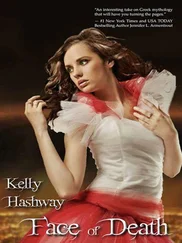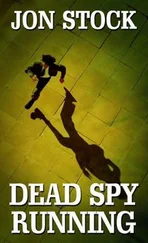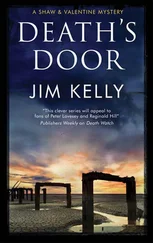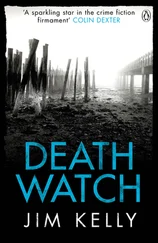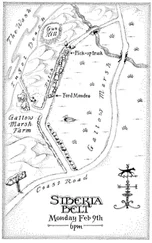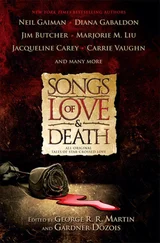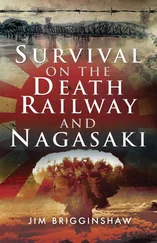Jim Kelly - Death Toll
Здесь есть возможность читать онлайн «Jim Kelly - Death Toll» весь текст электронной книги совершенно бесплатно (целиком полную версию без сокращений). В некоторых случаях можно слушать аудио, скачать через торрент в формате fb2 и присутствует краткое содержание. Жанр: Полицейский детектив, на английском языке. Описание произведения, (предисловие) а так же отзывы посетителей доступны на портале библиотеки ЛибКат.
- Название:Death Toll
- Автор:
- Жанр:
- Год:неизвестен
- ISBN:нет данных
- Рейтинг книги:5 / 5. Голосов: 1
-
Избранное:Добавить в избранное
- Отзывы:
-
Ваша оценка:
- 100
- 1
- 2
- 3
- 4
- 5
Death Toll: краткое содержание, описание и аннотация
Предлагаем к чтению аннотацию, описание, краткое содержание или предисловие (зависит от того, что написал сам автор книги «Death Toll»). Если вы не нашли необходимую информацию о книге — напишите в комментариях, мы постараемся отыскать её.
Death Toll — читать онлайн бесплатно полную книгу (весь текст) целиком
Ниже представлен текст книги, разбитый по страницам. Система сохранения места последней прочитанной страницы, позволяет с удобством читать онлайн бесплатно книгу «Death Toll», без необходимости каждый раз заново искать на чём Вы остановились. Поставьте закладку, и сможете в любой момент перейти на страницу, на которой закончили чтение.
Интервал:
Закладка:
The internal phone rang. It was DC Twine, down in records. ‘Sir? Just got the “V” files on our victim. She was murdered by her husband. He got life. Eight case files — a dozen on the trial.’
Shaw thought of one of his father’s maxims: delegate, don’t try to process all the information yourself. ‘Read what you can in twenty minutes, Paul, then come up and give us a summary. Relevant details only. We’re just waiting for Tom — he’s got some preliminaries from the scene.’
Shaw cut the line and checked his watch, which not only showed the time and the phase of the moon but was set to give the state of the tide at Hunstanton — just up the coast from his house.
The display read 11.48 p.m. High tide.
This is what he really hated about CID. The joyless time wasted waiting for other people to do their jobs. He thought about Lena, wrapped up, watching the beach through the double-glazed windows of the Beach Cafe, the icy rollers pounding on the sand. They’d bought the then derelict Old Beach Cafe three years ago. No access road — just the hard sand of the beach at low tide — no mains electricity, and accounts that showed an annual trading loss of?2,000 per annum. The stone cottage to the rear, in the dunes, and the old boathouse to the side, were all part of the?80,000 deal: both listed, both dilapidated. But the purchase had fulfilled two dreams in one go — Shaw got to live on his beloved beach where he’d played as a child; Lena got the independence she wanted and a business that filled nearly every waking hour. The cottage was now watertight, the cafe made-over in stripped pine, with an Italian coffee-making machine glinting behind the counter like a vintage motorbike. The boathouse was now Surf — a beach shop selling everything from?1,000 diver’s watches to 50p plastic windmills.
The urge to go home, park by the lifeboat house and run the mile to the cottage, was so strong that one of the muscles in his leg flexed involuntarily. Just the thought of it made his heartbeat skip, adrenaline seeping into his system at the prospect of exercise.
Despite the open window the CID room was hot and airless, the stale smell of sweat engrained in papers spilt across desktops. Valentine ditched a cigarette and closed the window as they heard the lift doors clash in the corridor and Tom Hadden’s unhurried steps echoing off the bare walls. He came through the doors backwards, because he held in his hands two glass trays. Wordlessly he set them on the desk in front of Shaw, tapping one with a ballpoint pen: a jumble of clods of clay mixed with a few pebbles and some darker humus.
‘This is some of the spoil from this woman’s grave — the soil the council workmen dug out today. They used a digger, then spades. It was in a pile by the graveside. It’s from the top of the pile — so that’s the earth just above the point where they stopped because they saw the bones on top of Nora Tilden’s coffin.’
He tapped the other glass. ‘This is a sample from underneath the skeleton — the strata sandwiched, as it were, between him and the coffin below. The science here is dull …’ He paused, and Shaw knew that was a lie, because Hadden lived for the science. ‘But the principles involved are very helpful. Soil, undisturbed, evolves …it becomes stratified, some minerals are drawn up, nutrients washed down, clay forms distinct layers — like those bottled sands you see in souvenirs from the Isle of Wight, a kind of natural layer cake. There’s one other useful process — the cemetery uses a chemical weedkiller. That washes down through the soil at a steady rate. Broadly, all this means that I can put an age on soil — in the sense that I can tell you how long it has remained undisturbed.’
He closed his eyes, considering exactly what he was about to say.
‘In this case the major finding — taking into account the way the skeleton itself has affected the soil — is that these two samples are the same age. In soil terms, “same” means give or take a year, probably less. The actual age will take a lot more science than I can bring to bear in an hour. But in many ways that doesn’t matter — the fact is, the earth thrown on top of the coffin has lain undisturbed for the same amount of time as the earth above the bones. So we have a clear picture. Imagine you’re there. If you looked in the grave you’d see Nora Tilden’s coffin at the bottom. Then a few feet of earth goes in. Then the corpse of the second victim. Then the rest of the earth. The only question is when. Did this happen on the day Nora Tilden was buried — before, in effect, the burial was complete, or did it happen at a later date — within a year of the burial?’
‘What’s your instinct?’ asked Shaw.
‘Well, I’d rule out the possibility this happened on the day of the funeral,’ said Hadden. ‘Given that this woman was undoubtedly buried in front of her family and friends. In broad daylight. In fact, given that I’m told she was murdered, and the killer convicted, there were almost certainly members of the CID present as well. So it’s pretty unlikely someone was able to slip a second corpse into the grave by sleight of hand.’
‘Why go dig up an old grave to hide a body — if you’re going to dig a hole, dig it somewhere hidden. Right?’ asked Valentine, adjusting his tie.
‘It makes more sense than you think,’ said Shaw. ‘Dig a hole anywhere and it can be found — OK, you can pick a bit of woodland, sand dunes, whatever. But someone might find it, because the ground’s disturbed. A dog, maybe. But if you think about it, the best place to hide a hole is in a cemetery. And for six months — longer — there’s nothing on the grave — no stone, usually nothing except rotting flowers. They let the soil settle first. So if you can do it without being seen it’s nearly perfect. And that’s the best opportunity — the first year.’
Shaw picked up one of the glass trays. ‘And that would remove any necessity for there to be a link between the two victims — because the grave might well have been chosen simply because it was fresh.’
Twine came through the door, a pile of files only just wedged under one arm. He ditched them on a desk, took a marker pen and wrote the name Nora Tilden on one of the perspex display boards. He looked at Shaw, Hadden and Valentine, confident enough to wait until they were ready for him to speak.
Shaw nodded.
‘Our victim was Nora Elizabeth Tilden. Her husband was Albert Ellis Tilden,’ said Twine, adding the name next to hers. ‘He pushed her down a flight of stairs, and as we’ve seen, broke nearly every bone in her body.’
‘OK — just a summary, Paul, please,’ said Shaw. ‘Relevant details. Tom’s in a hurry.’
Hadden sat, his shoulders slumping. Shaw guessed he wouldn’t sleep for days now — not in a bed, just snatching naps in the lab. Valentine took a seat and crossed his arms, thinking that they were about to find out how smart Paul Twine really was, because at this stage of a murder inquiry almost all the details were relevant.
Twine wrote Nora Tilden’s dates on the board: 1928–1982.
‘She inherited the Flask — the pub down on the riverside — from her father — Arthur Melville, in 1947. She was just nineteen.’
First mistake, thought Valentine. We can all add up.
Twine put her father’s name on the board above Nora’s, in the style of a family tree. ‘Nora married Albert — a sailor — after the war — he was merchant navy. Always known as Alby, by the way. Became a bit of a hero, apparently, sailing with the Arctic convoys. He was twenty when they married. They had a daughter, but the kid died within a few weeks of being born. Cot death, it looks like. That’s Mary — buried in the same plot.’
Читать дальшеИнтервал:
Закладка:
Похожие книги на «Death Toll»
Представляем Вашему вниманию похожие книги на «Death Toll» списком для выбора. Мы отобрали схожую по названию и смыслу литературу в надежде предоставить читателям больше вариантов отыскать новые, интересные, ещё непрочитанные произведения.
Обсуждение, отзывы о книге «Death Toll» и просто собственные мнения читателей. Оставьте ваши комментарии, напишите, что Вы думаете о произведении, его смысле или главных героях. Укажите что конкретно понравилось, а что нет, и почему Вы так считаете.

